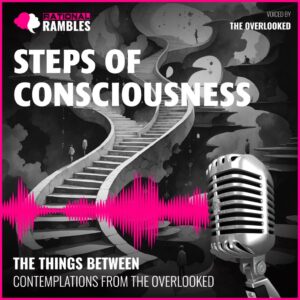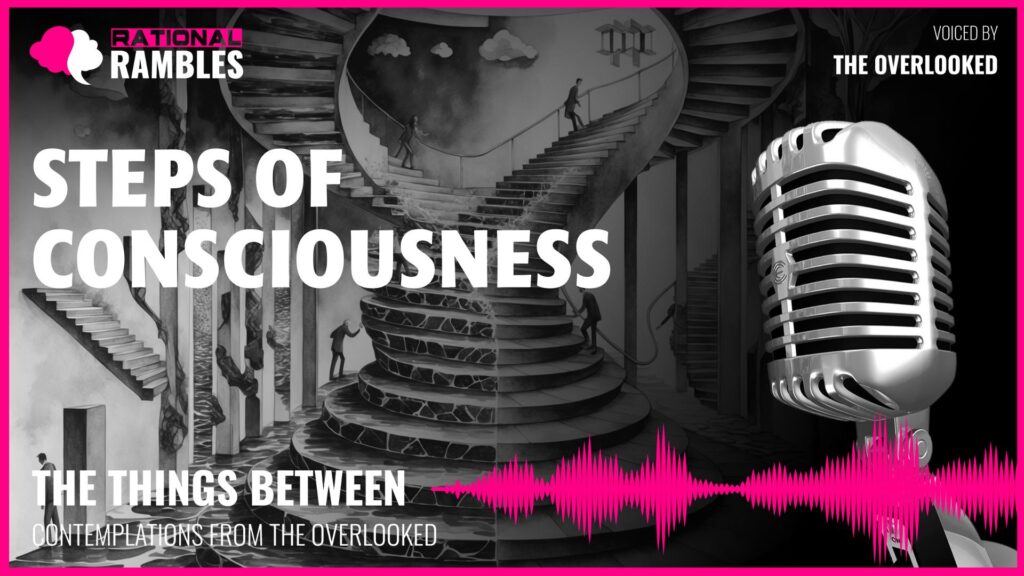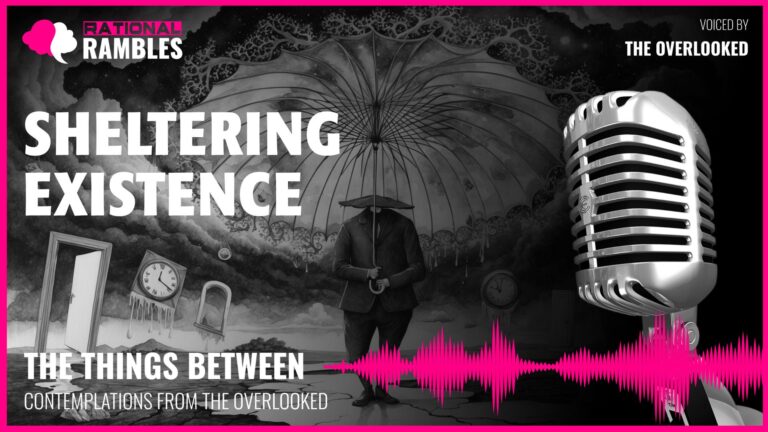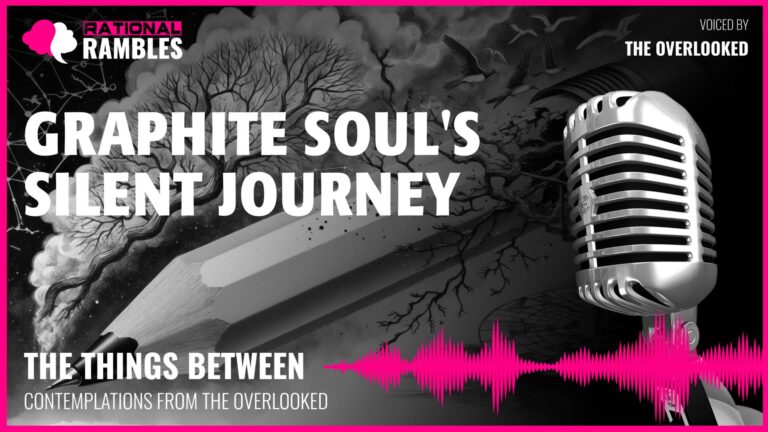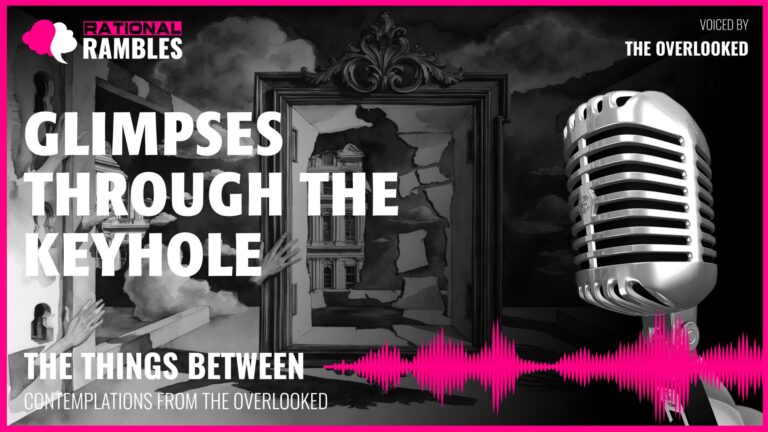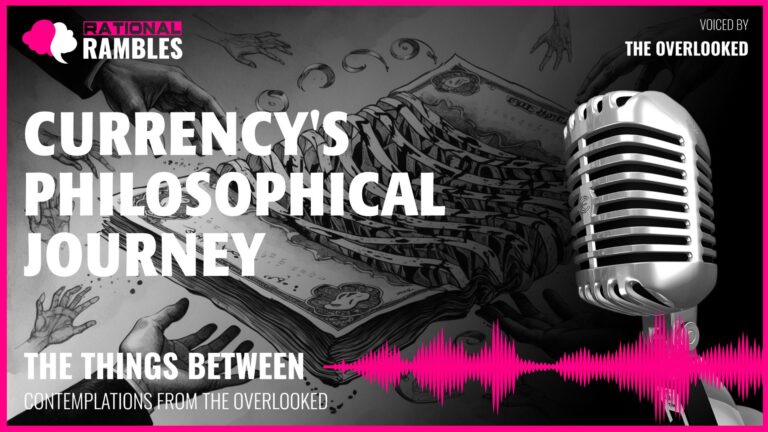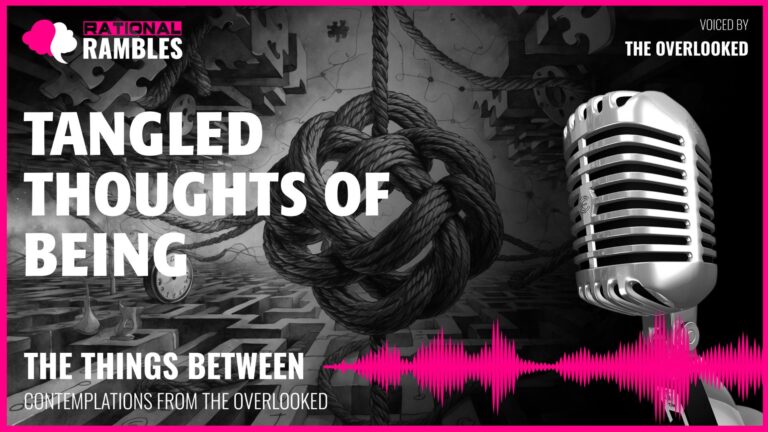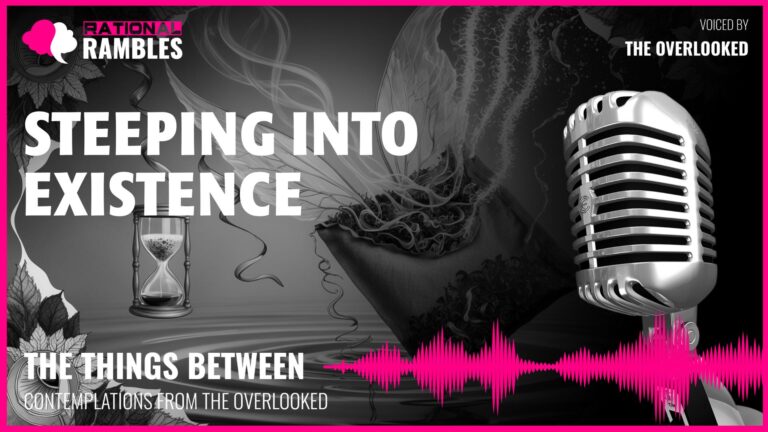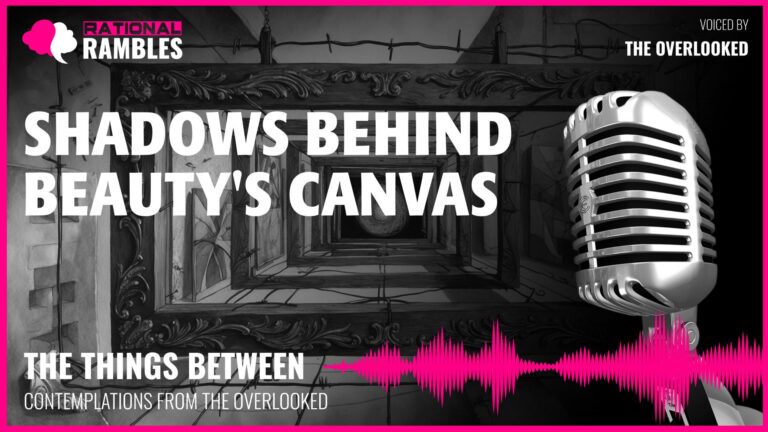The Architecture of Progress: Understanding Life’s Hierarchical Journey
Introduction
Human existence is marked by a peculiar preoccupation with progress—with moving upward, forward, onward toward some idealized state of being. This vertical metaphor permeates our language, institutions, and thinking patterns, suggesting that elevation equals improvement and that life follows a linear, upward trajectory. “Moving up in the world,” “climbing the ladder of success,” “rising to the occasion”—these spatial metaphors reflect our collective belief that advancement is inherently directional. Yet upon closer philosophical examination, this model of human progress reveals itself to be both illuminating and limiting, offering insight into how we structure meaning while potentially constraining our understanding of growth’s true nature.
This article explores the philosophical dimensions of hierarchical thinking and the illusion of linear development in human experience. By examining the architecture of progress—both literal and metaphorical—we can better understand the structures that shape our journey through life and the assumptions that underlie our pursuit of advancement. What can the concept of levels, steps, and transitions teach us about the nature of change? How might we reconcile our desire for clear, upward movement with the cyclical, recursive patterns that actually characterize human development? And what wisdom might emerge from recognizing that true progress often requires both structure and effort, framework and motion?
The Metaphysics of Hierarchy
Hierarchy, as both concept and structure, is deeply embedded in human thinking. From Plato’s ladder of forms to modern corporate organizational charts, we consistently organize reality into graduated levels of being, value, or complexity. This section examines the philosophical foundations of hierarchical thinking and its implications for how we understand progress.
Historical Perspectives on Vertical Order
The philosophical preoccupation with hierarchical order traces back to ancient traditions. Aristotle’s scala naturae (ladder of nature) arranged all beings in a continuous hierarchical chain from the simplest organisms to the divine. Medieval philosophers adapted this into the Great Chain of Being—a cosmic hierarchy extending from God through angels, humans, animals, plants, and minerals. This vertical cosmology wasn’t merely descriptive but normative, suggesting that higher positions inherently possessed greater value and perfection.
Neoplatonists like Plotinus conceptualized reality as emanating downward from the perfect One through successive levels of decreasing perfection. Even as modern philosophy moved away from explicitly theological hierarchies, the pattern persisted. Hegel’s dialectical progression of consciousness, Marx’s historical materialism, and evolutionary accounts of development all maintain some version of advancement through stages or levels, suggesting that hierarchy remains a fundamental pattern in how we conceptualize progress.
The Ontology of Levels
What does it mean, ontologically, for one state to be “higher” than another? This question probes the very nature of hierarchical relationships. Several philosophical approaches offer insight:
From a complexity perspective, higher levels typically incorporate and transcend lower levels, exhibiting emergent properties not present at simpler stages. Consciousness, for instance, emerges from but cannot be reduced to neurological activity. The philosopher Ken Wilber terms this “transcend and include”—higher stages don’t merely replace lower ones but integrate them into more comprehensive wholes.
From a value-based perspective, hierarchies reflect judgments about worth or goodness. Higher levels are deemed superior because they embody more fully certain valued qualities—rationality, autonomy, complexity, or moral development. Such axiological hierarchies are inherently normative, embedding claims about what constitutes advancement or improvement.
From a functional perspective, hierarchies represent increasing capacities for action, adaptation, or understanding. Higher levels offer expanded possibilities for engagement with reality. As philosopher Michael Polanyi observed, each level operates according to principles not fully explicable in terms of the level below, creating “boundary conditions” that constrain but don’t determine higher-level functioning.
The Paradox of Transitional States
Perhaps most intriguing is the ontological status of transitions themselves—the in-between spaces that are neither fully one level nor another. These liminal zones challenge our discrete categorizations, suggesting that being itself may be more fluid than our hierarchical models admit. Philosophers like William James emphasized that consciousness flows rather than appearing in distinct states, while process philosophers like Alfred North Whitehead argued that reality consists fundamentally of events and becomings rather than stable states.
Transitional states raise profound questions: Is the journey between established levels itself a level of being? Does progress consist in reaching destinations or in the movement between them? These questions reveal tensions in our understanding of development as both state-based and process-oriented.
The Phenomenology of Ascent
Beyond abstract metaphysical considerations, how is hierarchical progress actually experienced? This section explores the lived experience of advancement, examining the subjective dimensions of moving “upward” through life’s developmental sequences.
Effort and Resistance
A central phenomenological feature of advancement is the experience of effort against resistance. Progress rarely comes easily—it demands work, persistence, and the overcoming of obstacles. This experiential truth reflects physical reality: moving upward requires working against gravity’s pull. The resistance encountered in ascending isn’t merely incidental but constitutive of the value we ascribe to higher states.
Philosophers from Aristotle to Nietzsche have recognized that virtue and excellence develop through practice against resistance. Nietzsche particularly emphasized that growth requires struggle: “What doesn’t kill me makes me stronger.” Similarly, existentialists like Camus saw meaning in the struggle itself—his Sisyphus finds purpose not in reaching the mountaintop but in the perpetual effort of pushing the boulder upward.
This phenomenology of effort suggests that the value of achievement may reside partly in the work required to attain it. States reached without effort often feel less meaningful, less authentic. There appears to be an intrinsic connection between the experience of working against resistance and the sense that one has genuinely progressed.
Perspective and Progress
How we experience advancement depends significantly on where we direct our attention. Those focused solely on the destination—the higher level to be reached—experience progress differently from those attending to the immediate steps before them. This distinction recalls Martin Heidegger’s contrast between “present-at-hand” awareness (theoretical, detached) and “ready-to-hand” engagement (practical, immersed).
Those with eyes fixed upward often experience impatience, anxiety about distance remaining, and diminished appreciation for present positioning. Their experience is future-oriented, comparative, potentially dissatisfying. By contrast, those attending to immediate movements may experience greater presence, detail-awareness, and security, though potentially lacking broader contextual understanding.
Neither perspective is inherently superior; each offers insights unavailable to the other. The forward-looking climber sees possibilities invisible to the downward-gazing one, while the present-focused traveler notices details and nuances overlooked by the destination-fixated.
This phenomenological variation reveals that identical paths yield different experiences depending on attentional habits. Progress, subjectively speaking, is not merely about position on a hierarchy but about the quality of attention brought to one’s movement through it.
Plateaus and Landings
Developmental processes rarely proceed continuously. Rather, they typically feature periods of steady advancement interspersed with plateaus—intervals of consolidation, integration, and rest. These plateaus, phenomenologically speaking, serve essential functions in the experience of progress.
William James noted that learning typically involves “periods of rapid progress alternating with periods when we seem to be making no progress whatever.” Contemporary developmental psychologists confirm this pattern across domains from motor skills to moral reasoning. The plateau isn’t a failure of advancement but an integral aspect of it—a time when implicit integration occurs beneath conscious awareness.
Philosophically, these intervals of apparent non-movement raise questions about the nature of progress itself. If advancement requires periods of non-advancement, perhaps progress is better understood as rhythmic rather than continuous, cyclical rather than linear. The phenomenology of plateaus suggests that genuine development may require alternation between striving and stillness, effort and integration.
The Illusion of Linearity
Despite our tendency to conceptualize progress as linear—a straight path upward and forward—both empirical evidence and philosophical analysis suggest this model fundamentally misrepresents the nature of development. This section examines how the illusion of linearity shapes and potentially distorts our understanding of advancement.
Cycles and Repetitions
Human development rarely proceeds in a strictly forward direction. Rather, it typically involves cycles, repetitions, and returns to earlier states, albeit with new understanding. This pattern appears across domains from skill acquisition to psychological growth. As T.S. Eliot famously wrote: “We shall not cease from exploration, and the end of all our exploring will be to arrive where we started and know the place for the first time.”
Eastern philosophical traditions have long emphasized cyclical rather than linear conceptions of time and development. Buddhist concepts of samsara (the cycle of rebirth) and Hindu notions of cosmic cycles challenge Western progress narratives. Even within Western traditions, thinkers from Ecclesiastes (“There is nothing new under the sun”) to Nietzsche (eternal recurrence) have questioned strictly linear models.
The developmental psychologist Jean Piaget observed that cognitive development proceeds through cycles of assimilation and accommodation—taking in new information and then restructuring existing frameworks to integrate it. This dialectical process involves returns to earlier questions with new capacities, suggesting spiraling rather than linear advancement.
Regressions and Setbacks
Progress narratives often minimize or ignore the reality of regressions, presenting setbacks as aberrations rather than integral aspects of development. Yet temporary regressions appear consistently in developmental processes—from the “two steps forward, one step back” pattern of skill acquisition to the activation of earlier coping mechanisms during stress.
Psychoanalytic theorists from Freud onward have recognized regression as both defensive and potentially healing—a return to earlier developmental points to address unresolved issues. Similarly, existentialist philosophers highlight how crises can prompt returns to more fundamental questions, a process that appears regressive but may enable authentic advancement.
These observations suggest that direct, uninterrupted progress may be not only uncommon but potentially superficial. Genuine development may require periodic returns to earlier stages, reconsiderations of abandoned positions, and integration of aspects previously left behind. The path of growth resembles less an arrow than a spiral—returning to similar points but at different levels of comprehension.
Direction and Value
The illusion of linearity often conflates direction with value, assuming that “forward” or “upward” necessarily means “better.” This assumption merits critical examination. Developmental theorists like Clare Graves and Ken Wilber describe development as proceeding through stages that aren’t simply “higher” but differently adapted to varying existential problems.
Postmodern philosophers have particularly questioned progress narratives that privilege certain developmental directions (typically those valued by Western, educated, industrialized cultures). Michel Foucault analyzed how apparent “advances” in knowledge and institutions often disguise new forms of control rather than genuine liberation.
Even accepting that development has direction, the value of different positions depends on context and purpose. The philosopher Nicholas Rescher points out that optimization typically involves trade-offs—gaining capacities in one area often means losing advantages from earlier stages. The adult gains conceptual complexity but may lose the child’s immediacy of perception; civilization brings security but sacrifices certain freedoms.
This analysis suggests that linear progress models oversimplify complex developmental realities. Genuine understanding requires recognizing both directionality and cyclicality, advancement and return, gain and loss in the processes through which humans and societies develop.
The Mathematics and Architecture of Development
Progress doesn’t occur in an unstructured void but within frameworks that both enable and constrain development. This section examines how mathematical principles and architectural features shape the possibilities for advancement.
Consistency and Variation
Development requires both consistency and variation—a paradox evident in well-designed frameworks for advancement. Consider how educational curricula must provide consistent requirements yet allow for individual variations in learning paths. This balance reflects deeper philosophical tensions between universal standards and particular expressions.
Consistency creates reliability and security—knowing what to expect makes advancement possible. As Wittgenstein observed about language, rule-following provides the stability necessary for meaningful variation. Yet excessive consistency becomes rigid, preventing adaptation to unique circumstances and stifling innovation.
The educational philosopher John Dewey articulated this tension, arguing that growth requires both stability and flexibility—enough structure to provide direction but enough openness to allow for individual discovery and integration. This balance appears across developmental domains, from child-rearing practices to organizational change methodologies.
Incremental and Transformative Change
Development encompasses both incremental changes (gradual improvements within an existing framework) and transformative shifts (fundamental reorganizations of understanding). Thomas Kuhn’s distinction between “normal science” and “paradigm shifts” captures this dual nature of advancement, as does developmental psychologist Robert Kegan’s contrast between changes within meaning-making systems and transformations of those systems themselves.
This duality creates philosophical tensions: Does genuine progress require revolutionary transformations or patient accumulation? Western intellectual traditions have often privileged dramatic breakthroughs, while Eastern approaches typically emphasize gradual cultivation. Yet closer examination suggests these modes complement rather than oppose each other—transformative leaps typically build upon periods of incremental development, while incremental changes eventually enable transformative realizations.
Contemporary complexity theories suggest that systems naturally alternate between periods of stable, incremental change and phases of reorganization. This pattern, termed “punctuated equilibrium” in evolutionary theory, may represent a fundamental rhythm in developmental processes across scales from individual learning to civilizational advance.
Support Structures and Scaffolding
Progress rarely occurs through individual effort alone but depends upon supporting structures that enable advancement. Educational theorist Lev Vygotsky’s concept of the “zone of proximal development”—the range of capabilities possible with appropriate support—highlights how advancement depends upon scaffolding provided by more developed others or systems.
This dependency raises philosophical questions about the relationship between autonomy and support in genuine development. Kant’s Enlightenment imperative—”Dare to know! Have courage to use your own understanding!”—emphasizes autonomous thinking. Yet even self-directed advancement requires supportive conditions and resources.
Contemporary philosophers of education like Nel Noddings emphasize that development occurs within relationships and care structures, challenging individualistic models of progress. Similarly, disability theorists highlight how environmental supports can enable flourishing that would otherwise be impossible, suggesting that independence is less central to genuine advancement than appropriate interdependence.
These perspectives suggest that progress depends critically on the design of supporting frameworks—whether educational systems, social institutions, or built environments. The architecture of these supports significantly determines who can advance and how far, making the design of developmental structures an ethical as well as practical concern.
The Temporality of Progress
Progress unfolds through time, raising profound questions about how temporal experience shapes developmental processes. This section explores the relationship between time and advancement, examining how different temporal frameworks affect our understanding of progress.
Pace and Development
The rate at which development occurs significantly shapes its quality and character. Some individuals approach advancement rapidly, while others proceed more deliberately. Neither pace is inherently superior, but each creates different developmental experiences and possibilities.
Rapid advancement brings excitement, momentum, and quicker access to new capacities. However, as philosophers from Seneca to Kierkegaard have warned, excessive speed can prevent deep integration and understanding. Kierkegaard particularly criticized “the age of information” for its hasty accumulation of knowledge without wisdom—a critique that resonates even more powerfully in our accelerated digital era.
Deliberate, slower development allows for deeper integration, more thorough testing of understandings, and potentially more stable advancement. The philosopher Simone Weil emphasized that attention—the deliberate, patient focusing of consciousness—requires slowing down to fully apprehend reality. Similarly, Heidegger contrasted technological efficiency with the more contemplative, unhurried thinking he termed “meditative.”
These perspectives suggest that developmental pace involves trade-offs rather than simple optimization. Different rates suit different purposes and contexts, with the appropriate pace depending upon what’s being developed and toward what ends.
Permanence and Change
Progress involves a paradoxical relationship between permanence and change—between what remains stable through development and what transforms. This tension has occupied philosophers since Heraclitus (“No man steps in the same river twice”) and Parmenides (arguing that true being must be unchanging) articulated opposing views in ancient Greece.
In developmental contexts, certain elements must remain constant to provide continuity while others change to create advancement. Personal identity presents this paradox clearly: we understand ourselves as the same person through development despite significant transformations in capabilities, perspectives, and characteristics.
The philosopher Paul Ricoeur addressed this through his concept of “narrative identity”—the continuity we create by interpreting changes within an ongoing life story. Similarly, process philosophers like Alfred North Whitehead describe reality as “creative advance into novelty” that nonetheless maintains “patterned inheritance” from previous states.
This analysis suggests that genuine progress requires balancing transformation with continuity—changing enough to advance while maintaining enough consistency to preserve identity through changes. The art of development may lie precisely in discerning what should change and what should remain stable in any given advancement.
Past, Present, and Future in Development
Progress inherently involves temporal orientation—relating present actions to past experiences and future possibilities. How we distribute attention across these temporal dimensions significantly affects developmental processes.
Excessive past-orientation can trap development in repetitive patterns, as psychoanalytic theories emphasize. Conversely, ignoring the past risks repeating its mistakes and failing to build upon its achievements. The philosopher George Santayana’s famous warning that “those who cannot remember the past are condemned to repeat it” highlights this developmental hazard.
Future-fixation can motivate advancement but potentially disconnect development from present realities and possibilities. As Buddhist philosophy emphasizes, excessive future-orientation often creates suffering through attachment to specific outcomes while missing present opportunities. Phenomenologists like Merleau-Ponty similarly emphasize the primacy of present embodied experience as the ground from which meaningful futures emerge.
Balanced development appears to require integrating all three temporal dimensions: learning from the past, engaging fully with present possibilities, and orienting toward emergent futures. This temporal integration creates what the philosopher Martin Heidegger termed “authentic temporality”—a unified experience of time that overcomes fragmentation into isolated moments or abstract projections.
The Ethics of Hierarchy
Hierarchical conceptions of progress inevitably raise ethical questions about value, worth, and justice. This section examines the moral dimensions of developmental hierarchies and their implications for how we understand advancement.
Vertical Prejudice and Value
Hierarchical models often embed assumptions that “higher” necessarily means “better”—what we might term “vertical prejudice.” This tendency appears across domains from organizational structures (executives above workers) to spatial metaphors (“rising star,” “looking down on others”).
Critical theorists from various traditions have questioned these valuations. Marxist analysis exposes how hierarchical economic structures privilege certain forms of contribution while devaluing others. Feminist philosophers like Carol Gilligan have challenged developmental models that place stereotypically masculine values (autonomy, abstraction) above stereotypically feminine ones (connection, contextuality).
Postcolonial theorists highlight how Western progress narratives have justified domination by positioning non-Western societies as “lower” on developmental scales, while disability theorists question hierarchies that privilege certain forms of capability over others.
These critiques don’t necessarily reject all developmental distinctions but insist that hierarchies be examined for whose interests they serve and what values they privilege. The philosopher Elizabeth Anderson argues for “democratic equality” that recognizes different contributions without ranking their worth in simplistic hierarchies—a model that acknowledges developmental differences without corresponding judgments of superior and inferior worth.
Access and Opportunity
Developmental frameworks raise justice concerns about who can access opportunities for advancement. Physical staircases themselves illustrate this issue—they enable progress for some while creating barriers for others with different mobility capacities.
Social justice theorists emphasize that developmental opportunities are unequally distributed along lines of economic privilege, racial categorization, gender, disability status, and other social divisions. John Rawls’ influential theory of justice suggests that fair social arrangements would distribute opportunities so that inequalities benefit the least advantaged and positions remain open to all under conditions of fair equality of opportunity.
Beyond formal access, substantive opportunity requires appropriate supports for different starting positions and capabilities. The philosopher Martha Nussbaum’s capabilities approach emphasizes that justice requires not merely removing barriers but actively enabling human flourishing through appropriate resources and accommodations.
These perspectives suggest that ethical developmental frameworks must consider not only the structure of advancement but its accessibility across different human conditions and starting points. Just hierarchies, if possible at all, would be those that remain open to all with appropriate supports for diverse needs and starting positions.
The Purpose of Progress
Perhaps the most fundamental ethical question concerns the purpose of progress itself: advancement toward what and for whom? Different philosophical traditions offer contrasting answers:
Utilitarian perspectives suggest that progress should maximize overall wellbeing or happiness, potentially justifying temporary sacrifices for greater future benefit. By contrast, deontological approaches emphasize that development must respect the dignity and rights of individuals throughout the process, not merely in its outcomes.
Virtue ethics focuses on the development of character and excellence, suggesting that the purpose of progress is the cultivation of human flourishing or eudaimonia. Pragmatist philosophers like John Dewey emphasize growth itself as the goal—the continuous expansion of meaning and possibility rather than movement toward a fixed endpoint.
Religious and spiritual traditions typically understand progress as movement toward alignment with ultimate reality or divine purposes, while existentialist philosophers emphasize authentic self-creation in the absence of predetermined meanings.
These diverse perspectives reveal that progress lacks universal definition—its meaning depends upon what we value and how we understand human purpose. Ethical advancement requires explicit engagement with these foundational questions rather than unreflective pursuit of culturally prescribed developmental paths.
Beyond Linear Hierarchies: Alternative Models of Development
Recognizing the limitations of strictly linear, hierarchical models of progress, philosophers and theorists have proposed alternative frameworks that might better capture the complexities of development. This section explores these alternative conceptualizations and their implications.
Spiral Dynamics and Integrative Development
Clare Graves’ Spiral Dynamics theory, further developed by Don Beck and Ken Wilber, reconceptualizes development as a spiral rather than a ladder. In this model, development moves through alternating self-expressive and self-sacrificing stages, with each new level transcending but including earlier capacities rather than simply replacing them.
This spiral model acknowledges both directional development and the value of earlier stages, which remain available as appropriate responses to certain circumstances. Higher development means greater flexibility and range rather than permanent transcendence of earlier capacities.
Philosophically, this approach resonates with Hegel’s dialectical process—each developmental stage preserves elements of earlier stages in a more integrated form (Aufheben or “sublation”). It suggests that genuine advancement involves not abandoning earlier developmental achievements but recontextualizing them within more comprehensive frameworks.
Rhizomatic Development
Gilles Deleuze and Félix Guattari proposed the rhizome—a horizontally spreading root system with multiple, non-hierarchical connection points—as an alternative to arborescent (tree-like) hierarchical models. Rhizomatic thinking emphasizes lateral connections, multiple entry points, and non-linear development paths.
This model challenges assumptions that development must proceed through predetermined sequences or toward single endpoints. Instead, it suggests that advancement might involve creating novel connections between existing elements, exploring multiple developmental paths simultaneously, and valuing horizontal expansion as much as vertical ascent.
Educational theorists have applied rhizomatic thinking to learning processes, emphasizing how knowledge develops through networks of connection rather than linear accumulation. This perspective values divergent exploration and creative recombination alongside sequential mastery.
Ecological and Systems Models
Ecological approaches understand development as occurring within complex systems of interrelationship rather than through isolated linear progressions. Developmental psychologist Urie Bronfenbrenner’s ecological systems theory, for instance, examines how development unfolds through interactions between individuals and their multilayered social contexts.
Systems theories emphasize how advancement emerges from relationship patterns rather than individual properties alone. This shift from atomistic to relational thinking challenges individualistic progress narratives, suggesting that development always occurs within and through relationships rather than as solo achievement.
Philosophically, these approaches align with process-relational thinkers like Alfred North Whitehead, who emphasized that entities emerge from their relationships rather than existing as independent substances. This perspective suggests that genuine progress involves developing more complex, beneficial relationship patterns rather than advancing isolated individuals or components.
Network Models and Distributed Development
Network theories offer yet another alternative to strictly hierarchical models, understanding development as changes in connection patterns rather than movement up predefined levels. Contemporary theorists like Manuel Castells describe how social and technological networks reshape development possibilities, creating more distributed, less centralized advancement patterns.
In network models, progress involves optimizing connection patterns rather than ascending levels. Development might mean increasing connectivity, creating more effective feedback loops, or generating more adaptive response patterns within a system. This approach emphasizes the structure of relationships over the properties of individual nodes.
Cognitive scientists applying network models to mental development describe intelligence as emerging from connection patterns rather than hierarchical organization alone. This suggests that cognitive advancement involves creating more effective, flexible mental networks rather than simply ascending through predefined developmental stages.
These alternative models don’t necessarily reject directional development entirely but offer more complex, multidimensional understandings of how advancement occurs. They suggest that progress might be better understood through metaphors of expanding networks, spiraling integration, or ecological enrichment than simple upward movement.
Conclusion: The Wisdom of Steps
Our exploration of progress, hierarchy, and developmental structures reveals both the power and limitations of linear thinking about advancement. The metaphor of steps—sequential, directional, requiring effort yet enabling elevation—captures important truths about development while potentially obscuring others.
Perhaps the deepest wisdom lies in recognizing that genuine progress involves paradoxical combinations: direction with cyclicality, structure with flexibility, effort with support, transformation with continuity. Development appears to follow neither purely linear nor completely random patterns, but rather complex trajectories that incorporate both purposeful direction and adaptive responsiveness to changing contexts.
The philosopher John Dewey defined growth as increasing capacity to grow further—a recursive definition that emphasizes development as expanding possibility rather than movement toward fixed endpoints. This perspective suggests that the most valuable progress may be that which creates conditions for further development—building steps that enable yet more steps.
This understanding invites us to approach development with both intentionality and humility—purposefully creating structures that enable advancement while remaining open to unexpected paths and emergent possibilities. It challenges us to design developmental frameworks that balance necessary structure with essential flexibility, providing direction without predetermining destinations.
Perhaps most importantly, this analysis invites reflection on our developmental metaphors themselves. The images and models through which we conceptualize progress profoundly shape how we pursue it. By expanding our metaphorical repertoire beyond simple vertical hierarchies to include spirals, networks, ecosystems, and other complex patterns, we might develop richer, more nuanced approaches to advancement in both individual lives and collective endeavors.
The steps by which we ascend remain important—but so too are the landings between flights, the varied rhythms of climbing, the supporting structures that make ascent possible, and the diverse paths that different climbers might take. In honoring this complexity, we might discover more authentic, inclusive, and sustainable forms of progress than linear models alone can provide.


